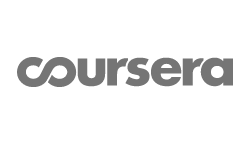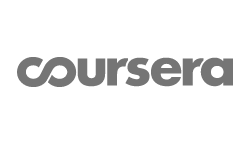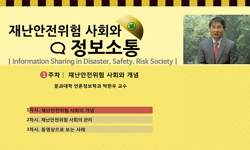Background: The elimination of anesthetic agents is a decisive factor in the emergence from general anesthesia. In this pilot study, we hypothesized that hypercapnia would decrease the emergence time from propofol anesthesia by increasing cardiac outp...
http://chineseinput.net/에서 pinyin(병음)방식으로 중국어를 변환할 수 있습니다.
변환된 중국어를 복사하여 사용하시면 됩니다.
- 中文 을 입력하시려면 zhongwen을 입력하시고 space를누르시면됩니다.
- 北京 을 입력하시려면 beijing을 입력하시고 space를 누르시면 됩니다.



Hypercapnia does not shorten emergence time from propofol anesthesia: a pilot randomized clinical study
한글로보기https://www.riss.kr/link?id=A105480371
- 저자
- 발행기관
- 학술지명
- 권호사항
-
발행연도
2018
-
작성언어
English
- 주제어
-
등재정보
KCI등재,SCOPUS,SCIE
-
자료형태
학술저널
- 발행기관 URL
-
수록면
207-212(6쪽)
-
KCI 피인용횟수
0
- 제공처
- 소장기관
-
0
상세조회 -
0
다운로드
부가정보
다국어 초록 (Multilingual Abstract)
Background: The elimination of anesthetic agents is a decisive factor in the emergence from general anesthesia. In this pilot study, we hypothesized that hypercapnia would decrease the emergence time from propofol anesthesia by increasing cardiac output and cerebral blood flow.
Methods: A total of 32 patients were randomly divided into two groups based on the end-tidal carbon dioxide values: 30 mmHg (the hypocapnia group) and 50 mmHg (the hypercapnia group). Propofol and remifentanil were infused to maintain a bispectral index of 40–50. Remifentanil infusion was stopped 10 min before the discontinuation of propofol. After cessation of propofol infusion, ventilation settings in the hypocapnia group were maintained constant; a rebreathing tube was connected to the respiratory circuit in the hypercapnia group. The time to spontaneous respiration, eye opening (primary endpoint), mouth opening, and tracheal extubation was recorded and analyzed.
Results: Time to eye opening was 9.7 (1.3) min in the hypocapnia group and 9.0 (1.0) min in the hypercapnia group. The difference in the mean times to eye opening between groups was −0.7 min (95% CI, −4.0 to 2.7, P = 0.688). On multiple regression analysis, there was a significant difference in the mean time to eye opening between males and females. Females recovered about 3.6 min faster than males (95% CI, −6.1 to −1.1, P = 0.009).
Conclusions: We could not detect a beneficial effect of hypercapnia on propofol emergence time. Irrespective of hypercapnia, females seemed to recover faster than males.
참고문헌 (Reference)
1 Gan TJ, "Women emerge from general anesthesia with propofol/alfentanil/nitrous oxide faster than men" 90 : 1283-1287, 1999
2 Weber T, "Tromethamine buffer modifies the depressant effect of permissive hypercapnia on myocardial contractility in patients with acute respiratory distress syndrome" 162 : 1361-1365, 2000
3 Apfelbaum JL, "The initial clinical experience of 1819 physicians in maintaining anesthesia with propofol: characteristics associated with prolonged time to awakening" 77 (77): S10-S14, 1993
4 Andrzejowski J, "The effect of intravenous epinephrine on the bispectral index and sedation" 55 : 761-763, 2000
5 Choong E, "Sex difference in formation of propofol metabolites: a replication study" 113 : 126-131, 2013
6 Sakata DJ, "Rapid recovery from sevoflurane and desflurane with hypercapnia and hyperventilation" 105 : 79-82, 2007
7 Takizawa D, "Propofol concentrations during the anhepatic phase of living-related donor liver transplantation" 76 : 648-649, 2004
8 Kurita T, "Influence of cardiac output on plasma propofol concentrations during constant infusion in swine" 96 : 1498-1503, 2002
9 Sakata DJ, "Hypercapnic hyperventilation shortens emergence time from isoflurane anesthesia" 104 : 587-591, 2007
10 Gopalakrishnan NA, "Hypercapnia shortens emergence time from inhaled anesthesia in pigs" 104 : 815-821, 2007
1 Gan TJ, "Women emerge from general anesthesia with propofol/alfentanil/nitrous oxide faster than men" 90 : 1283-1287, 1999
2 Weber T, "Tromethamine buffer modifies the depressant effect of permissive hypercapnia on myocardial contractility in patients with acute respiratory distress syndrome" 162 : 1361-1365, 2000
3 Apfelbaum JL, "The initial clinical experience of 1819 physicians in maintaining anesthesia with propofol: characteristics associated with prolonged time to awakening" 77 (77): S10-S14, 1993
4 Andrzejowski J, "The effect of intravenous epinephrine on the bispectral index and sedation" 55 : 761-763, 2000
5 Choong E, "Sex difference in formation of propofol metabolites: a replication study" 113 : 126-131, 2013
6 Sakata DJ, "Rapid recovery from sevoflurane and desflurane with hypercapnia and hyperventilation" 105 : 79-82, 2007
7 Takizawa D, "Propofol concentrations during the anhepatic phase of living-related donor liver transplantation" 76 : 648-649, 2004
8 Kurita T, "Influence of cardiac output on plasma propofol concentrations during constant infusion in swine" 96 : 1498-1503, 2002
9 Sakata DJ, "Hypercapnic hyperventilation shortens emergence time from isoflurane anesthesia" 104 : 587-591, 2007
10 Gopalakrishnan NA, "Hypercapnia shortens emergence time from inhaled anesthesia in pigs" 104 : 815-821, 2007
11 Akca O, "Hypercapnia improves tissue oxygenation" 97 : 801-806, 2002
12 Takizawa D, "Human kidneys play an important role in the elimination of propofol" 102 : 327-330, 2005
13 Kuipers JA, "First-pass lung uptake and pulmonary clearance of propofol: assessment with a recirculatory indocyanine green pharmacokinetic model" 91 : 1780-1787, 1999
14 Myburgh JA, "Epinephrine, norepinephrine and dopamine infusions decrease propofol concentrations during continuous propofol infusion in an ovine model" 27 : 276-282, 2001
15 Sakabe T, "Effects of anesthetic agents and other drugs on cerebral blood flow, metabolism, and intracranial pressure;Cottrell and Young's Neuroanesthesia. 5th ed." Mosby/Elsevier 78-94, 2010
16 Nurcan Kizilcik, "Effects of a fentanyl-propofol mixture on propofol injection pain: a randomized clinical trial" 대한마취통증의학회 68 (68): 556-560, 2015
17 Cenic A, "Cerebral blood volume and blood flow at varying arterial carbon dioxide tension levels in rabbits during propofol anesthesia" 90 : 1376-1383, 2000
18 Upton RN, "Cardiac output is a determinant of the initial concentrations of propofol after shortinfusion administration" 89 : 545-552, 1999
19 Reekers M, "Basic concepts of recirculatory pharmacokinetic modelling" 523 : 19-26, 2003
20 Walley KR, "Acute respiratory acidosis decreases left ventricular contractility but increases cardiac output in dogs" 67 : 628-635, 1990
21 Sasano H, "A simple apparatus for accelerating recovery from inhaled volatile anesthetics" 93 : 1188-1191, 2001
22 Takizawa D, "A dopamine infusion decreases propofol concentration during epidural blockade under general anesthesia" 52 : 463-466, 2005
동일학술지(권/호) 다른 논문
-
- 대한마취통증의학회
- Ajay Singh
- 2018
- KCI등재,SCOPUS,SCIE
-
- 대한마취통증의학회
- Katherine S. Monroe
- 2018
- KCI등재,SCOPUS,SCIE
-
- 대한마취통증의학회
- 심성민
- 2018
- KCI등재,SCOPUS,SCIE
-
- 대한마취통증의학회
- 권대은
- 2018
- KCI등재,SCOPUS,SCIE
분석정보
인용정보 인용지수 설명보기
학술지 이력
| 연월일 | 이력구분 | 이력상세 | 등재구분 |
|---|---|---|---|
| 2023 | 평가예정 | 해외DB학술지평가 신청대상 (해외등재 학술지 평가) | |
| 2020-01-01 | 평가 | 등재학술지 유지 (해외등재 학술지 평가) |  |
| 2013-11-27 | 학회명변경 | 한글명 : 대한마취과학회 -> 대한마취통증의학회 |  |
| 2011-01-01 | 평가 | 등재학술지 유지 (등재유지) |  |
| 2010-07-20 | 학술지명변경 | 한글명 : 대한마취과학회지 -> Korean Journal of Anesthesiology |  |
| 2009-01-01 | 평가 | 등재학술지 유지 (등재유지) |  |
| 2007-01-01 | 평가 | 등재 1차 FAIL (등재유지) |  |
| 2004-01-01 | 평가 | 등재학술지 선정 (등재후보2차) |  |
| 2003-01-01 | 평가 | 등재후보 1차 PASS (등재후보1차) |  |
| 2001-07-01 | 평가 | 등재후보학술지 선정 (신규평가) |  |
학술지 인용정보
| 기준연도 | WOS-KCI 통합IF(2년) | KCIF(2년) | KCIF(3년) |
|---|---|---|---|
| 2016 | 0.09 | 0.09 | 0.1 |
| KCIF(4년) | KCIF(5년) | 중심성지수(3년) | 즉시성지수 |
| 0.09 | 0.09 | 0.27 | 0.01 |





 KCI
KCI





